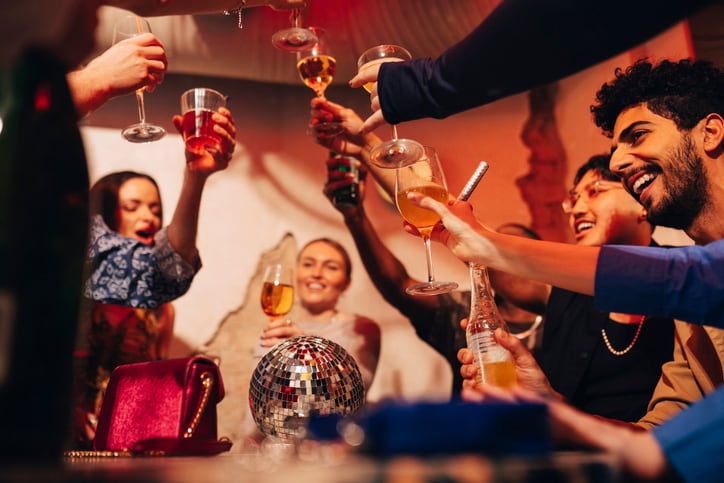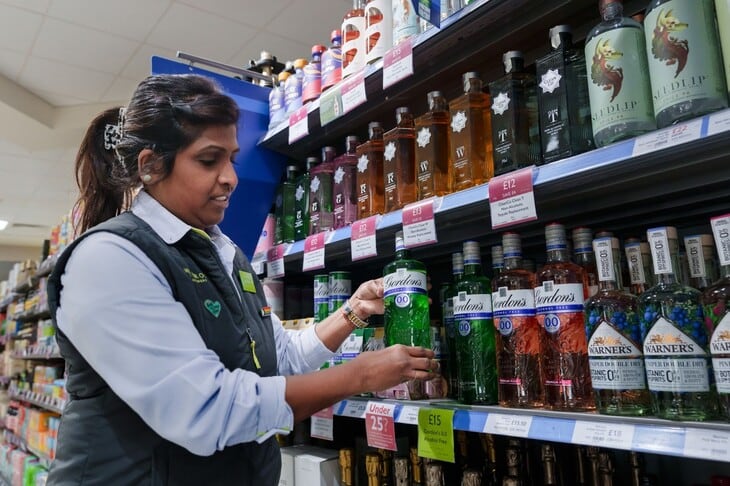Americans are drinking less than ever. But how does that play out across different demographics? And how does that influence their drinking habits when they do drink?
Gallup’s latest poll sets out to answer these core questions. The analytics and advisory firm has tracked Americans’ drinking behavior since 1939. Over the last 25 years, it’s also tracked more nuanced perspectives on views around drinking and health. That gives it a wide overview of what Americans are drinking and their thinking behind their choices.
The data is part of the Gallup Poll Social Series: a set of public opinion surveys designed to monitor US adults views on numerous social, economic and political topics.
Large declines in alcohol consumption
From 1997 to 2023, at least 60% of Americans reported drinking alcohol.
Today, that figure is 54%.
The consecutive declines in Americans’ drinking habits are ‘unmatched’ in Gallups surveys.
The decline has been most pronounced over the last few years. Gallup treats 2023’s 62% as a baseline (a 2022 reading of 67% is considered an outlier).
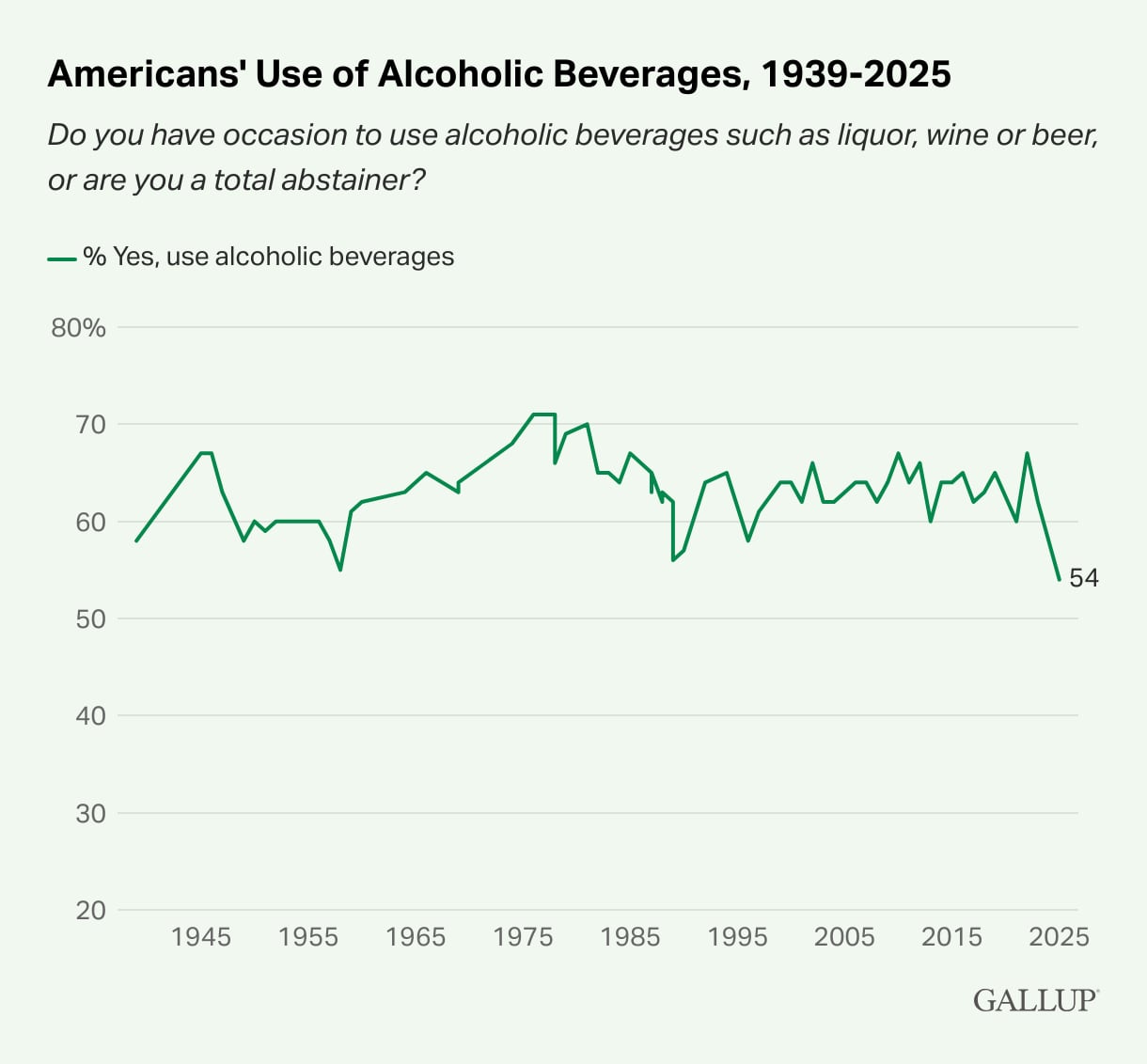
A decline in drinking has been more pronounced among women than men.
And young adults are particularly likely to abstain: the rate fell from 59% in 2023 to 50% today (and comes in below the average of 54%).
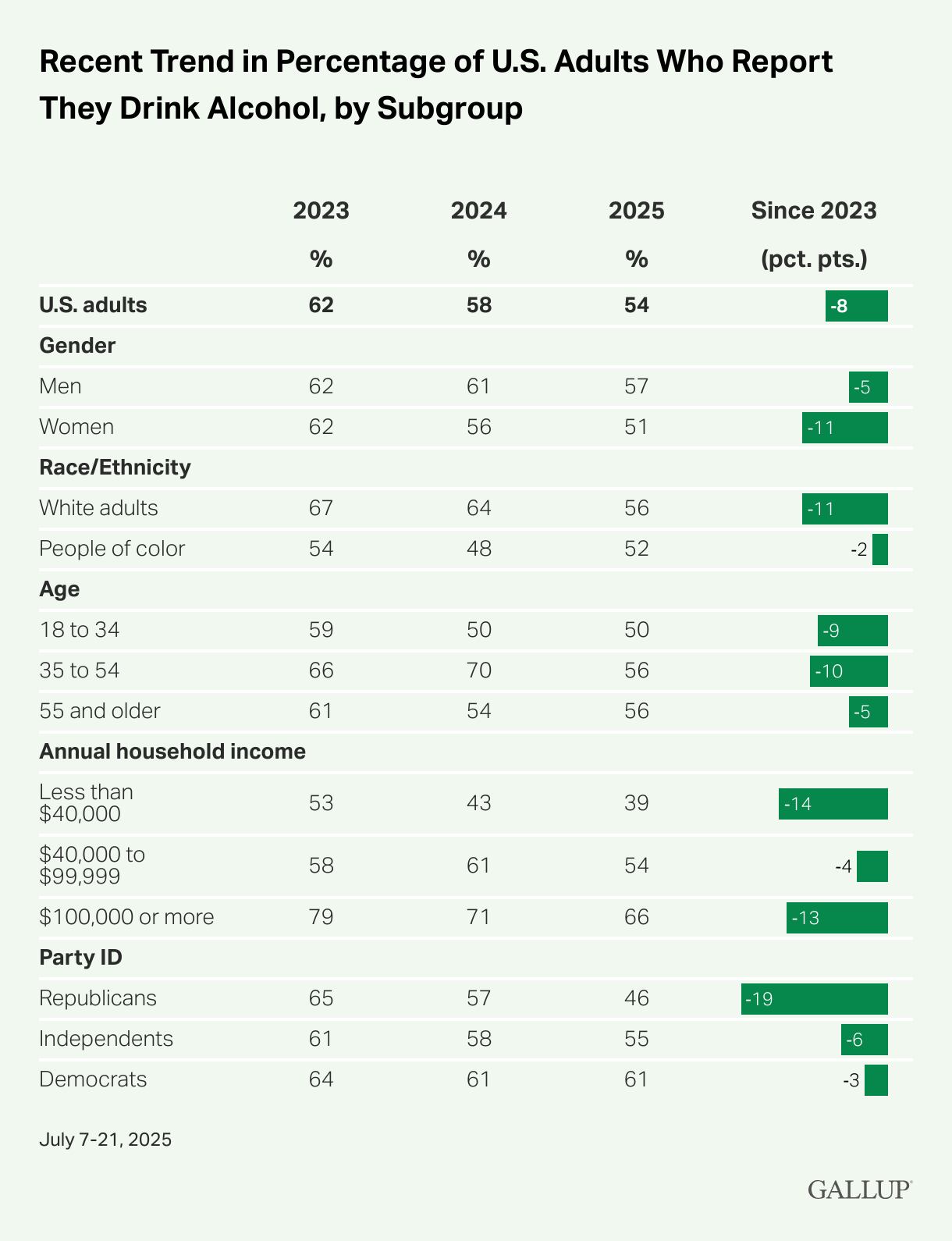
Those who do drink are drinking less.
A record low 24% of drinkers say they’ve had a drink in the past 24 hours. Meanwhile, 40% say it’s been more than a week since they last consumed alcohol.
That’s the highest percentage since 2000.
The average number of drinks consumed per week is 2.8: the lowest figure Gallup has recorded since 1996. That’s down from 3.8 drinks a year ago and nearly 4.0 drinks a week seven years earlier. In 2003, the figure was 5.1 drinks per week.
Top drink of choice for American drinkers
Beer is the preferred drink – but the gap is narrowing.
Beer used to be, by far, America’s favorite beverage.
This remains the case: but drinks are now more evenly distributed between this and other choices.
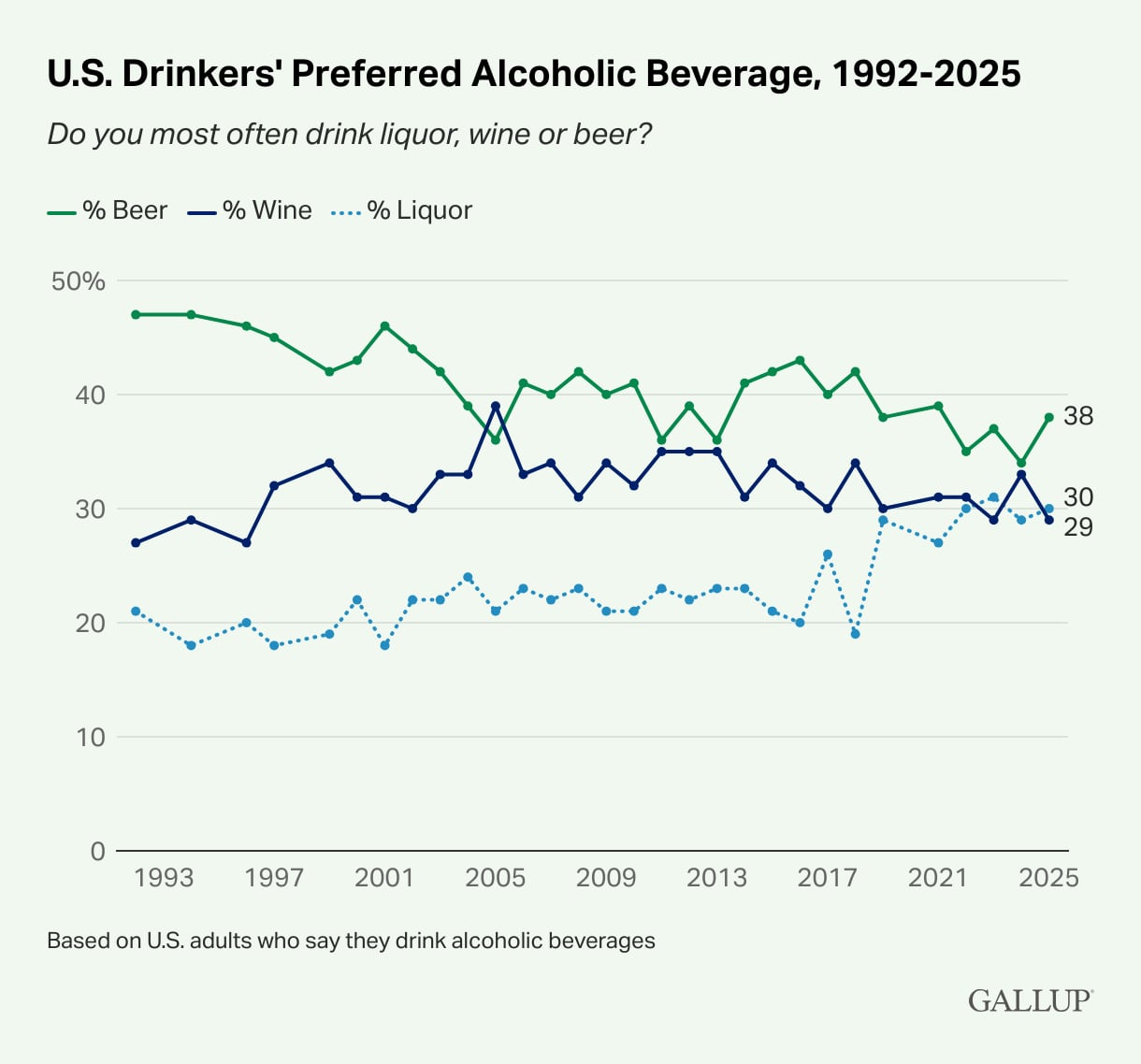
Beer, for example, was picked as the favorite choice by 48% of survey respondents in 1993: it’s now favored by 38%.
Liquor has risen in popularity: having been chosen by 21% in 1993 and up to 30% today.
Despite large, structural declines in the wine category, wine hasn’t fallen out of favor with consumers as much as reports would suggest, with consumption remaining relatively even.
More and more Americans are conscious of the health implications of alcohol: and that’s affecting their consumption, according to Gallup.
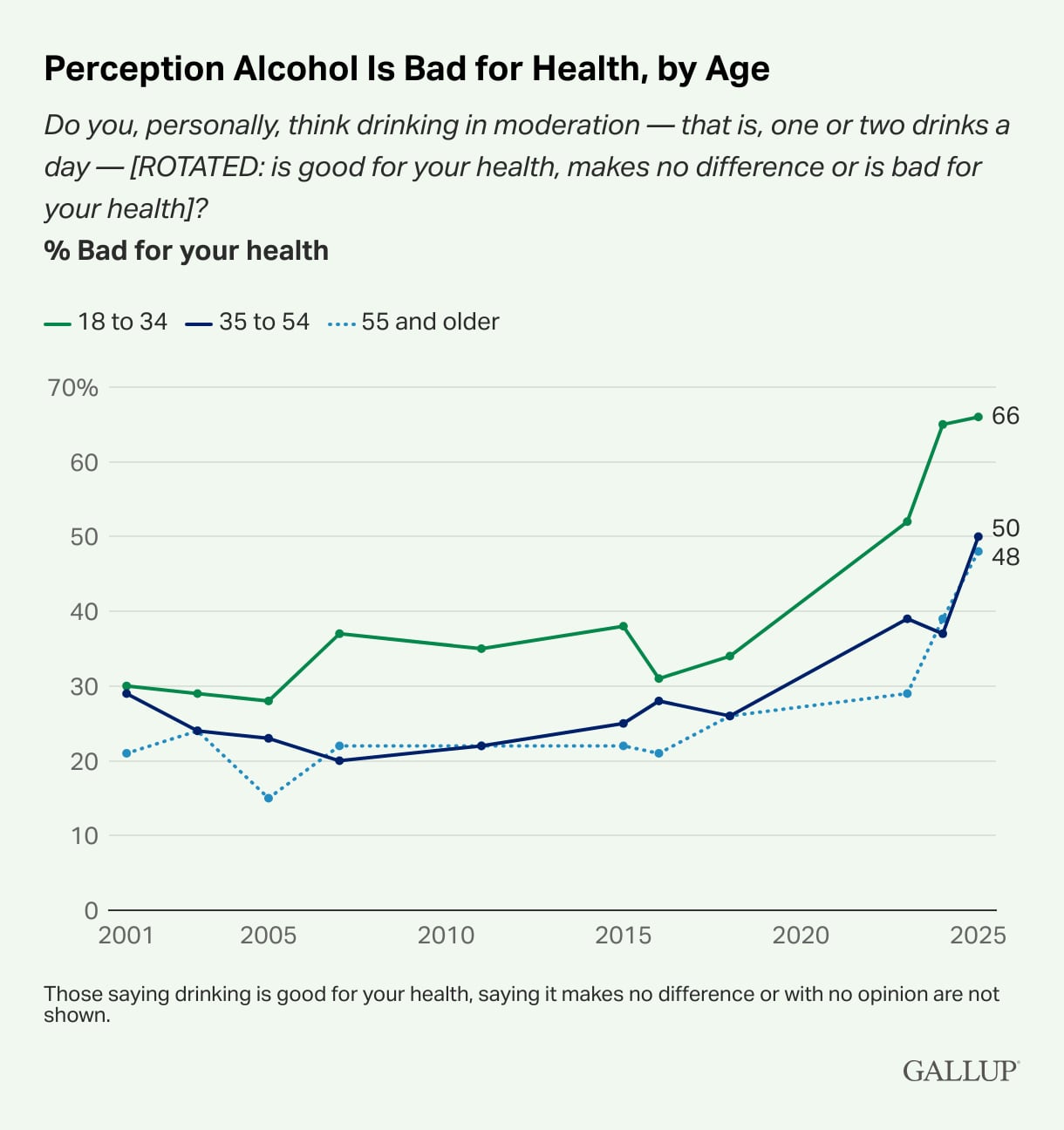
The poll found that – for the first time in its history - a majority of Americans (although a small one, at 53%), say drinking even in moderation is bad for one’s health (this was defined as ‘one or two drinks a day).
However, 37% believe it makes no difference, while only 6% believe alcohol can be good for health.
Those who think drinking is bad for health are actually just as likely to be drinkers as those who don’t. The difference is they drink less frequently: saving it for a treat or special occasion.
Only half of those who harbor health-related concerns say they have had a drink within the past seven days (49%), compared with 69% of those who don’t share these health concerns.
Gallop's poll
Phone interviews were conducted with a random sample of US adults aged 18+ in all 50 states and the District of Columbia in July 2025 (totaling 1,002 respondents).
So why are Americans drinking less?
Certainly a drive towards health and wellness is pushing people to re-assess their alcohol intake.
On top of that, governments and public health officials have started to really drive home the dangers of alcohol consumption. In January, the then Surgeon General called for US alcohol brands to include cancer warning headlines on alcohol, creating headlines across the country.
As Lydia Saad, director of US social research at Gallup says: “Gallup has documented three consecutive years of decline in drinking as research supporting the “no amount of alcohol is safe” message mounts."
Could that, she asks, mean the alcohol industry is at the start of a long decline: in the 1960s, the US Surgeon General’s warnings about tobacco heralded a huge shift in attitudes.
But for Nick White, Head of Strategic Research at market research platform Attest, consumers may simply be voting with their dollars.
“While this data highlights how perceptions about drinking are shifting, our own research indicates that the decline in alcohol consumption is largely due to the cost of living,” he said.
A recent survey from the firm found 31% of consumers had changed alcohol consumption to help them manage their spending.
And yet health and wellness also plays into this message: it’s not that they’re not spending any money, it’s just their priorities have changed.
“This trend could have long term implications: even if inflation eases, people are likely to have adapted to new, healthier habits,” he said.


